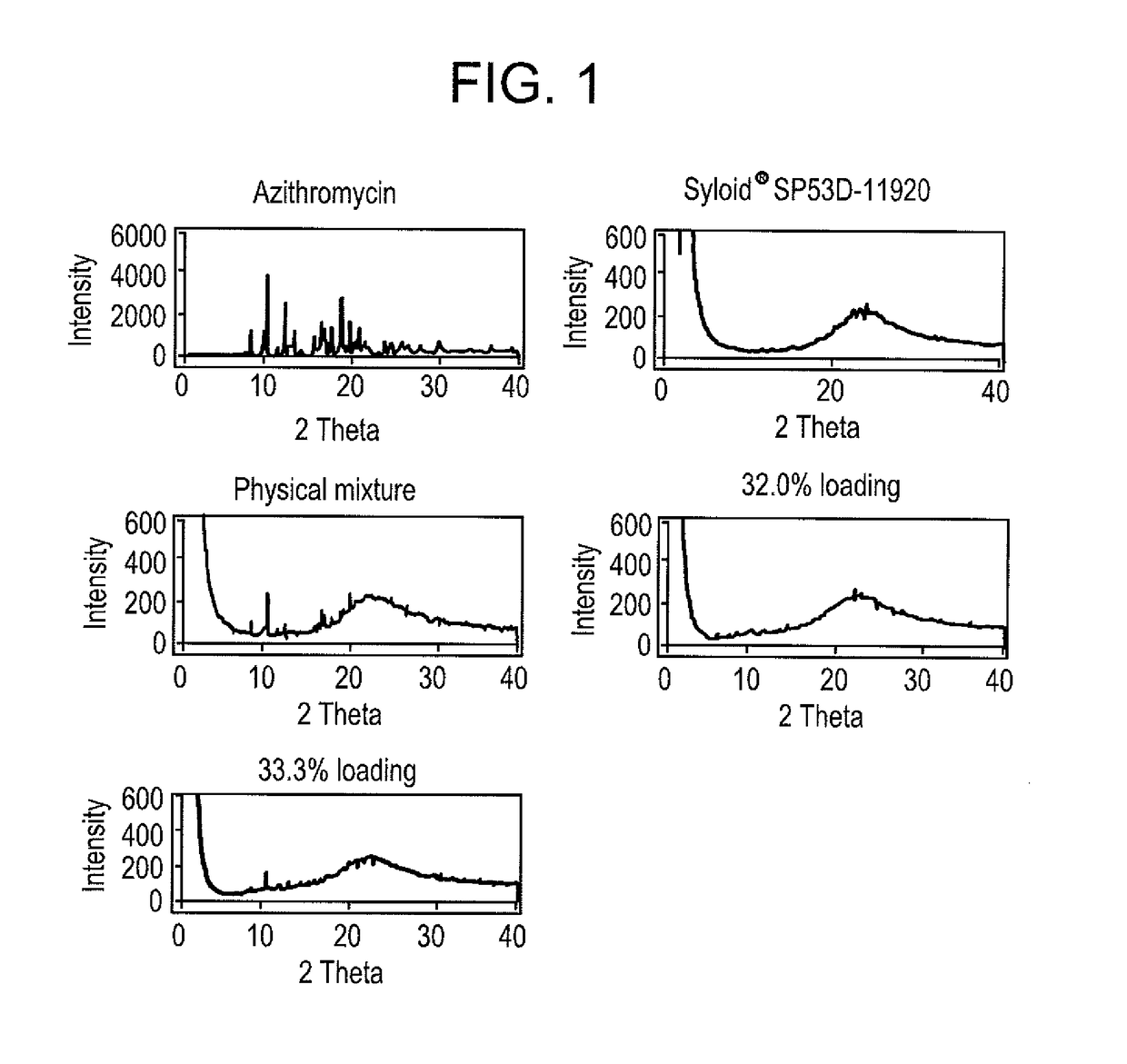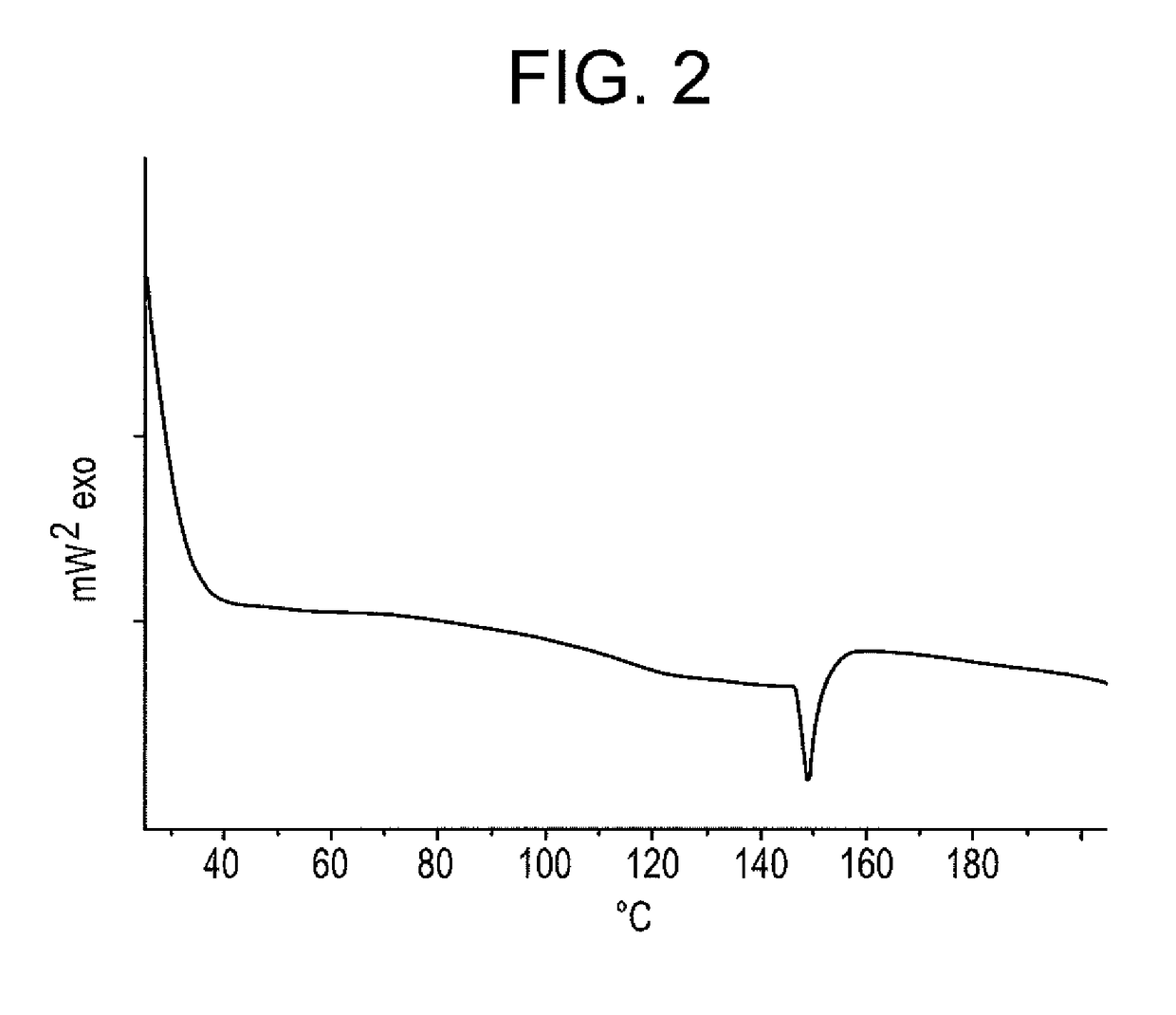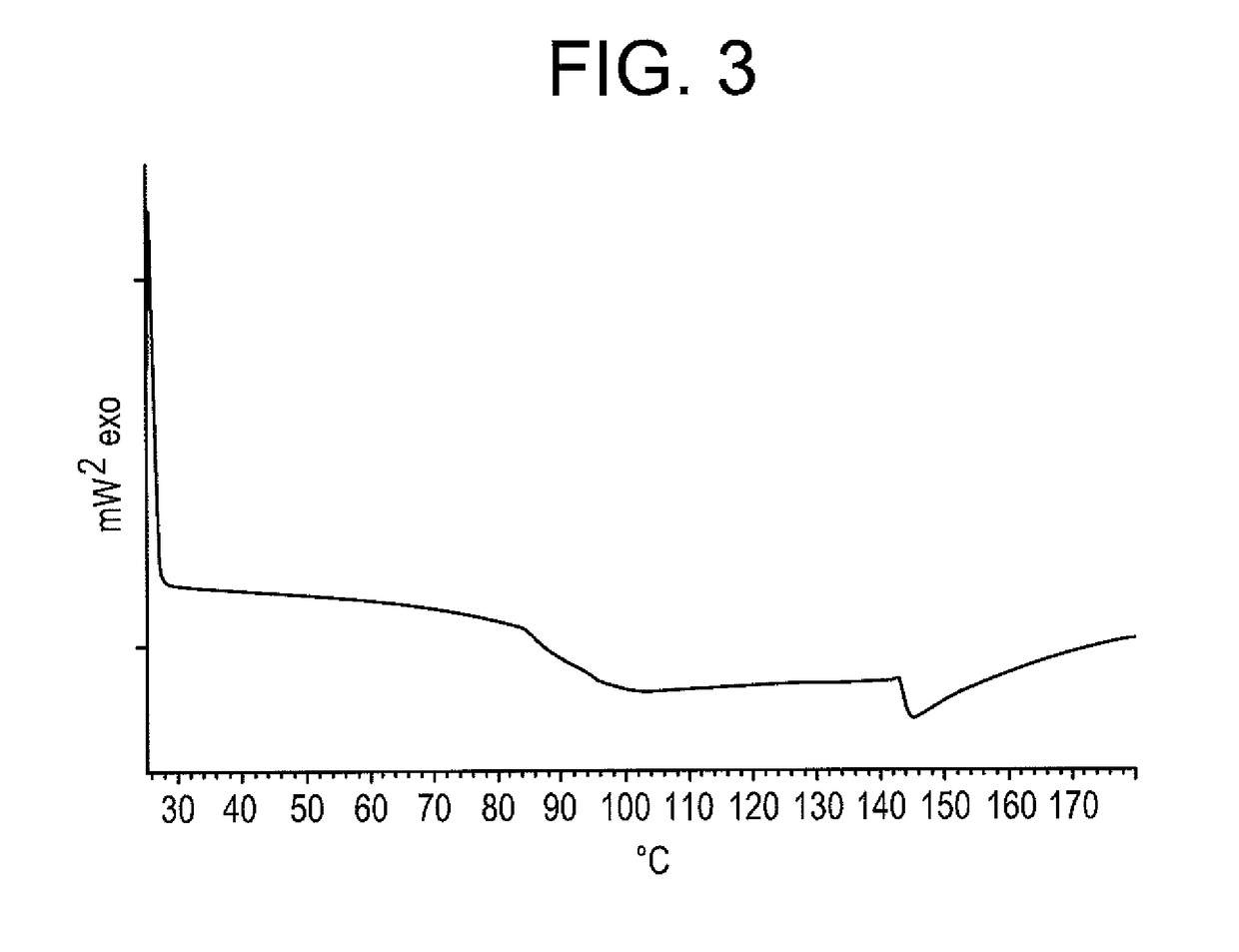Active-loaded particulate materials for topical administration
a technology of active-loaded particulates and topical administration, which is applied in the direction of organic active ingredients, cyclic peptide ingredients, non-active ingredients of pharmaceuticals, etc., can solve the problems of poor soluble biological actives (e.g. drugs), increase the solubility of formulations identical to o/w creams, and low concentration gradients. achieve the effect of increasing stability and performan
- Summary
- Abstract
- Description
- Claims
- Application Information
AI Technical Summary
Benefits of technology
Problems solved by technology
Method used
Image
Examples
example 1
Loading of Syloid® SP53D-11920 Silica With Azithromycin—Loading 32% (w / w)
[0164]First the drug azithromycin dihydrate raw powder was dissolved in ethanol (96%) in a ratio of 1:4 by weight to get azithromycin ethanol solution. Then 32.0% loading Syloid® SP53D-11920 silica was achieved by 3 steps.
[0165]In the first step, 2.5 g Syloid® SP53D-11920 silica was loaded with 0.5 g drug by addition of 2.5 g solution under stirring using an ointment bowl and pestle. To ensure that the drug solution was absorbed by the silica immediately and homogenously, the azithromycin solution was sprayed manually by a spraying nozzle screwed onto a glass bottle. Subsequently the ethanol was evaporated at 40° C. in a compartment dryer. The complete evaporation was controlled via determining the weight loss.
[0166]In the second step, 2.25 g of the obtained silica was loaded with 0.4 g drug by spraying of 2 g solution using the same method. In the third step, 2.025 g of this silica was loaded with 0.186 g drug...
example 2
Loading of Aeroperl® 300 Silica With Azithromycin—Loading 27.4%
[0167]The loading method was identical to example 1, but applying only 2 steps. Azithromycin was dissolved in ethanol (96%) in a ratio of 1:4 by weight to get azithromycin ethanol solution. Then 27.4% loading of Aeroperl® 300 silica was achieved by 2 steps. In the first step, 2.5 g Aeroperl® 300 silica was loaded with 0.5 g drug by spraying of 2.5 g solution onto Aeroperl® 300 silica under stirring using ointment bowl and pestle. In the second step, 2.25 g of the obtained silica was loaded with 0.4 g drug by addition of 2 g solution using analogous method.
example 3
Loading of Neusilin® US2 Silica With Azithromycin
[0168]The loading method was identical to example 2. Azithromycin was dissolved in ethanol (96%) in a ratio of 1:4 by weight to get azithromycin ethanol solution. Then 27.4% loading Neusilin® US2 silica was achieved by 2 steps. In the first step, 2.5 g Neusilin® US2 silica was loaded with 0.5 g drug by spraying of 2.5 g solution under stirring using mortar and pestle. In the second step, 2.25 g of this silica was loaded with 0.4 g drug by spraying of 2 g solution.
PUM
| Property | Measurement | Unit |
|---|---|---|
| Pore size | aaaaa | aaaaa |
| Pore size | aaaaa | aaaaa |
| Pore size | aaaaa | aaaaa |
Abstract
Description
Claims
Application Information
 Login to View More
Login to View More - R&D
- Intellectual Property
- Life Sciences
- Materials
- Tech Scout
- Unparalleled Data Quality
- Higher Quality Content
- 60% Fewer Hallucinations
Browse by: Latest US Patents, China's latest patents, Technical Efficacy Thesaurus, Application Domain, Technology Topic, Popular Technical Reports.
© 2025 PatSnap. All rights reserved.Legal|Privacy policy|Modern Slavery Act Transparency Statement|Sitemap|About US| Contact US: help@patsnap.com



